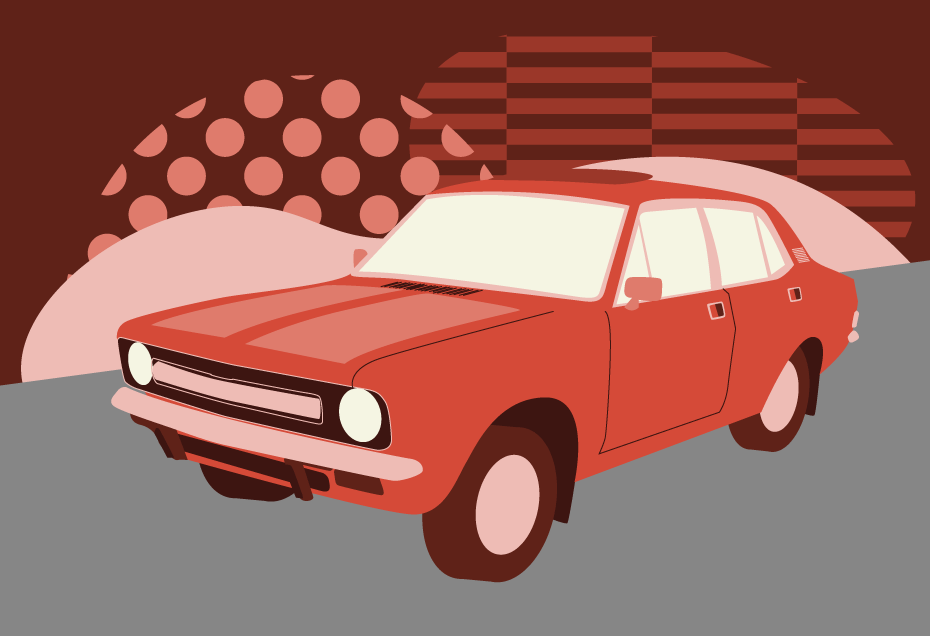The Baby Boom generation was coming of age, more of them were attending college than ever before, and they were looking for a car – something affordable, smaller, and sporty.
Ford came up with the perfect answer, unveiling the Mustang at the New York World’s Fair on April 17, 1964.
We look at the first two generations of the original ‘pony car’.
The Mustang was the product of extensive market research in a rapidly-changing motoring world in the early 1960s.
Essentially, Ford read the trends better than any of their competitors and, having identified “a market looking for a car”, hit the bullseye at the first attempt.
So what was that market? The company noticed that more young people were attending college (university) than ever before, and those with a college education were far more likely to buy new cars.
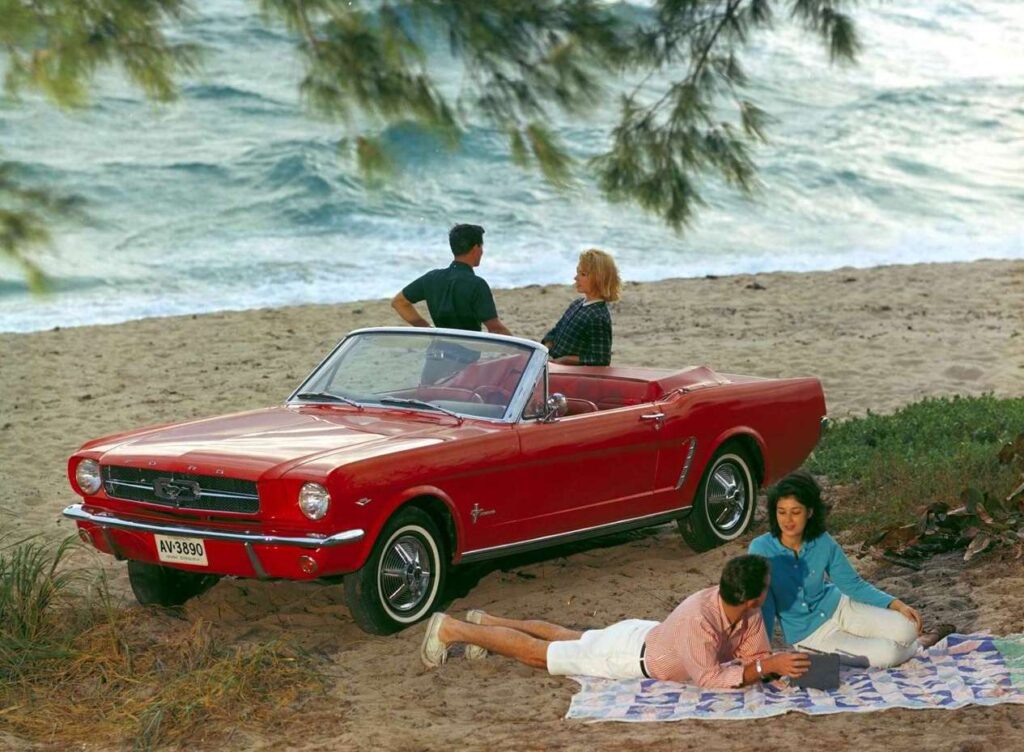
There was also a rapid rise in the number of two-car families, and female drivers, who were most likely to make use of the second car.
It all added up to a large, youthful, educated market – including women – who wanted a car with some sporty panache at a price they could afford, because what this young market didn’t have was oodles of cash.
An early design objective, therefore, was to keep costs down, achieved by using familiar components from other Ford cars like the Falcon and Fairlane.
Mustang development
New cars often spend years in development, but the Mustang went from prototype to production in about 18 months – and the prototype Mustang I bore no visible resemblance to the finished car.
A mid-engined two-seater, it borrowed heavily from European styling and made its debut in October 1962 at Watkins Glen in New York before being toured around college campuses to gauge opinion.
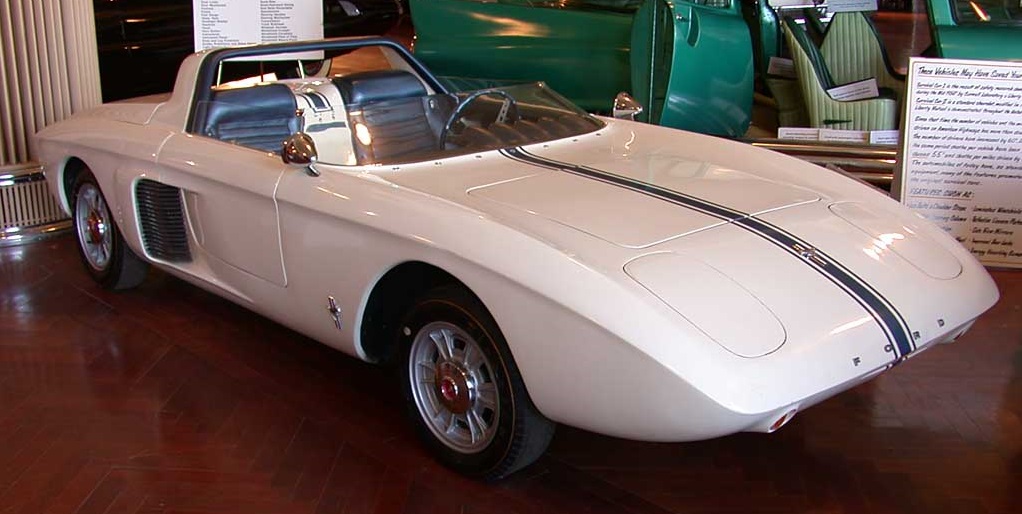
At Watkins Glen, F1 driver Dan Gurney lapped the Grand Prix circuit at speeds up to 120mph, causing Motor Trend to report that “Ford will produce a sports car to compete with the Corvette” – just the ticket for Ford’s vice president and general manager Lee Iacocca.
With the concept considered too complex for production, but the rumour-mill of a new sporty Ford well and truly churning, the company set the hares running internally, with designers of the Corporate Projects Studio, the Ford Studio and the Lincoln-Mercury Studio asked to compete to produce a new concept within two weeks.
It would need to seat four, have bucket seats, weigh no more than 1,100kg and be no more than 5m long, sell for less than $2,500, and have multiple power, comfort, and luxury options.
Seven entries were received, but the one from Joe Oros, David Ash and John Najjar of Ford Studio stood out, winning favour with potential buyers who had been invited to view the proposals.
Unlike the first prototype, this latest version was very close in design to the production car and it made its public debut at Watkins Glen in October 1963.
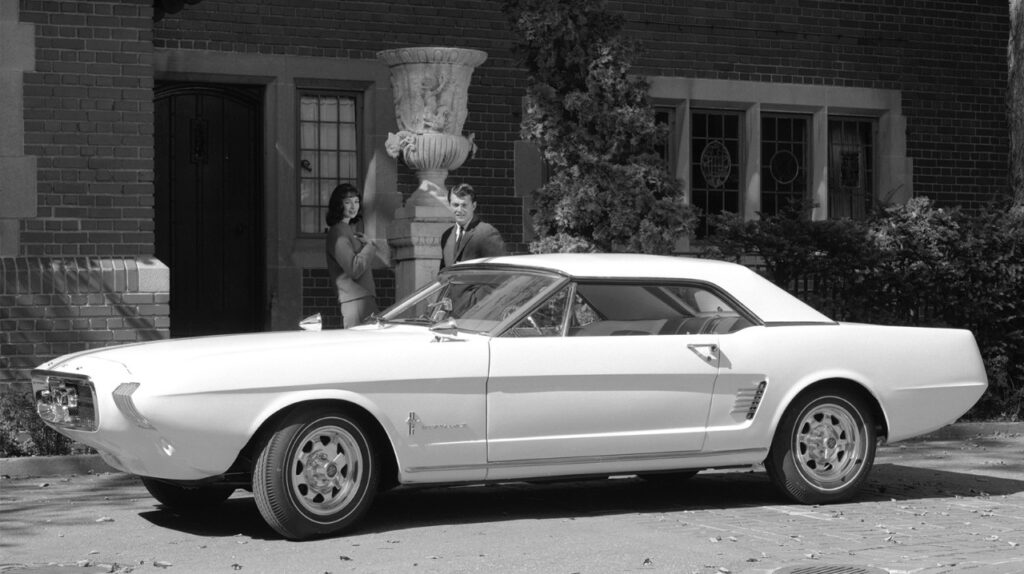
Production began at Dearborn, Michigan, just five months later, and the first cars were shown at the New York World’s Fair in April.
The Mustang was described by Ford insiders as “demure enough for church-going, racy enough for the drag strip, modish enough for the country club”.
Launching the Mustang
This idea that the Mustang could be anything to anybody was reflected in a huge choice of options, with a hard-top and convertible available at launch and a fastback added a few months later.
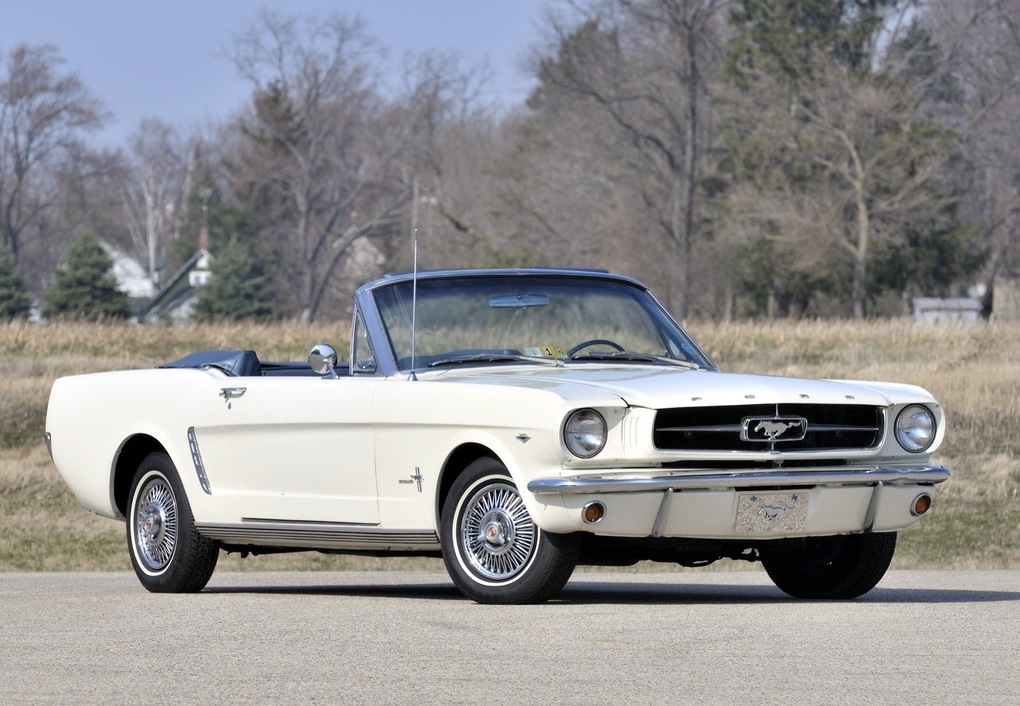
Early models offered an underpowered, 101bhp straight-six borrowed from the Falcon, or an underwhelming 160bhp V8, and there was a wide choice of clutches, transmissions, driveshafts, brake systems, wheel types and sizes, suspension systems, and steering systems.
To keep costs down, Ford used chassis, drivetrain and suspension parts from the Falcon and Fairlane, but with a shorter wheelbase, wider track, lower seating position, and lower overall height.
It all added up to a launch price of $2,368, well below customer expectations when shown the car before the launch.
Needless to say, Ford’s initial advertising – which included TV ads on launch day that reached an audience of 29 million – focused heavily on price and styling.
To say it worked would be an understatement. Customers flooded to Ford dealerships across the US, causing chaos as crowds gathered to see, drive and potentially buy the new car.
In one Texas dealer, 15 customers bid to buy the sole showroom model, with the winner sleeping in the car to ensure it wasn’t sold before his cheque cleared the following day.
More than 22,000 cars were ordered on the first weekend, far exceeding the expectations of Ford executives, who had conservatively estimated sales of about 200,000 in the first full year.
That mark was passed quickly, the first full-year sales topped 400,000, and the millionth Mustang was manufactured on March 2, 1966, a new US passenger car production record.
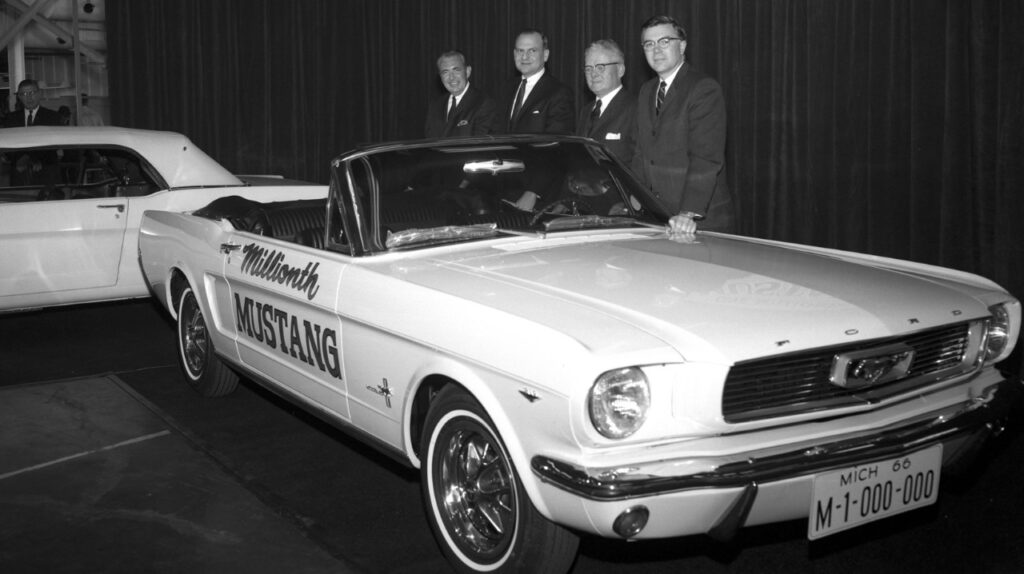
America had fallen in love with the Mustang, and the era of the ‘pony car’ was off at a gallop.
Its runaway success caused rivals to scramble into action, and within a few years General Motors had created the Chevrolet Camaro and Pontiac Firebird, Chrysler had (belatedly) launched the Dodge Challenger and updated the Plymouth Barracuda, and AMC came up with the Javelin.
Like our illustration of the Ford Mustang: the right car at the right time at the beginning of the article?
Download a free high-quality poster version here.
Evolution of the Mustang
In its first couple of years, the Mustang’s power units constantly increased in power, with the 170-cu in (2.8l) straight-six boosted to 200-cu in (3.3l), increasing output to 120bhp.
But the real action was with the V8s, with the short-lived 260-cu in Fairlane V8 (164bhp) replaced as the base V8 by the new 200bhp, 289 cu in (4.7l) engine with a two-barrel carburettor, with a 210bhp, four-barrel version the next step up (increased to 225bhp in 1965).
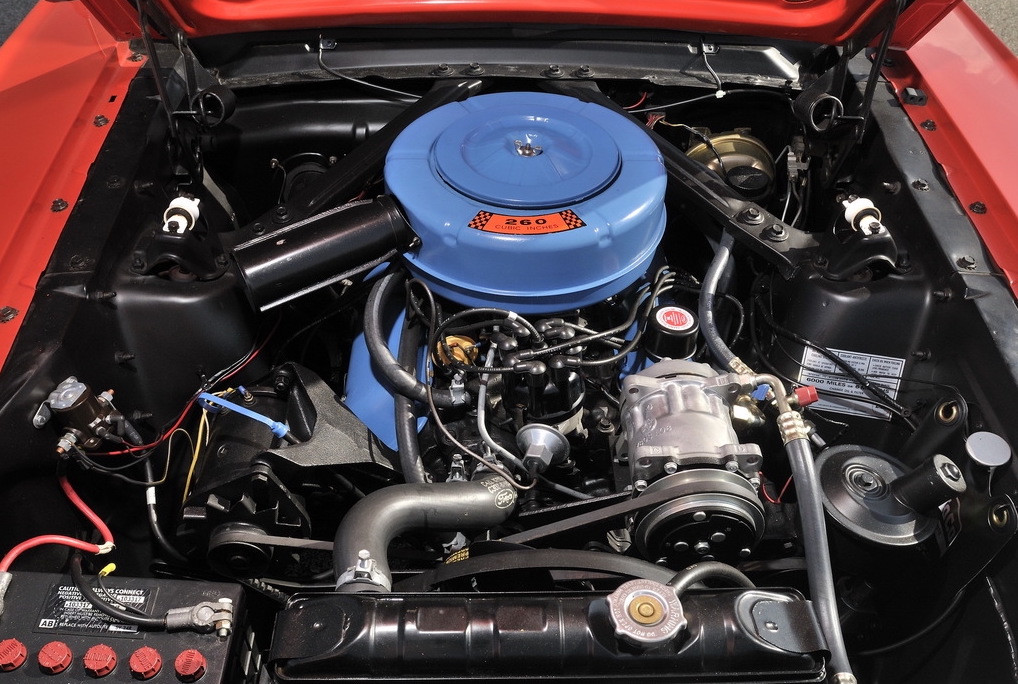
Testing a 210bhp version in May 1964, Car and Driver magazine said the new car was “easily the best thing to come out of Dearborn since the 1932 V-8 Model B roadster”.
The magazine thought the car drove well with the optional “handling package” – including heavy-duty coil springs, special shock absorbers, and a larger-diameter anti-roll bar – but was “pretty flabby” without it.
They were out of step with public opinion on its styling though, calling it “inexplicably amateurish”.
“There is a non-functional air scoop along the body sides and a clumsy, protruding grill between the single headlamps. The hood lands on the grille with a fit that reminds us of the lid on one of our mother’s more experienced saucepans, and the grille side panels have an air of scatterbrained afterthought. On the credit side, let’s mention the bumper treatment and the taillights, which are very neatly contrived and blended with their surroundings.”
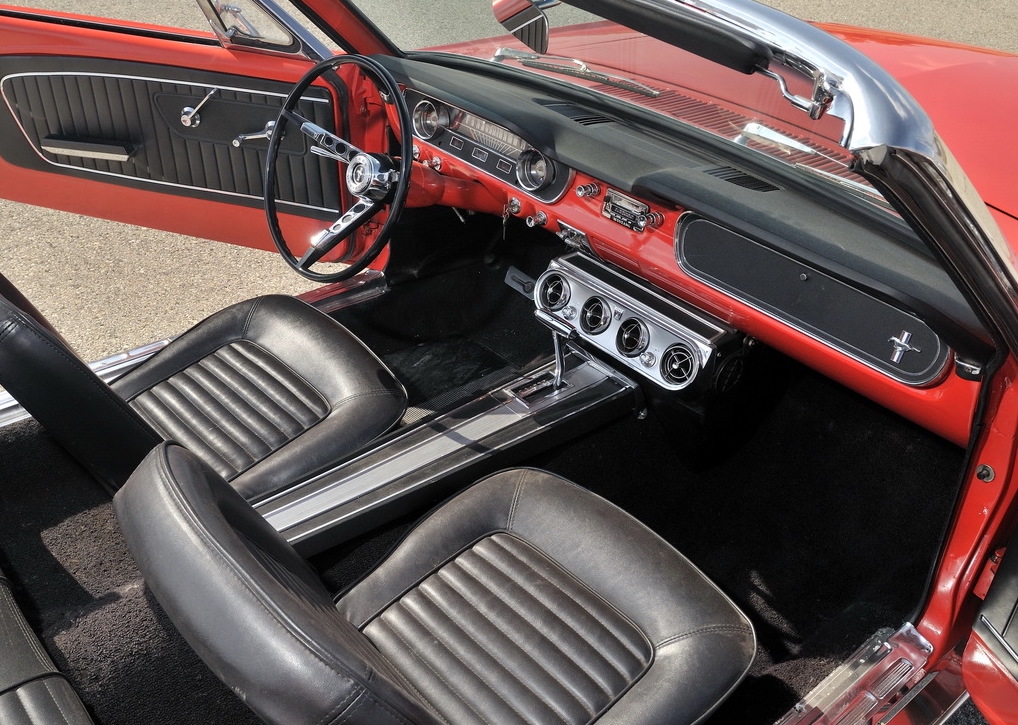
Never mind; millions of Americans seemed to like it…as well as Road & Track, for whom it was an “interesting, exciting car to look at”.
But what most enthusiasts were waiting for came along in June 1964, with the high-performance (Hi-Po) version of the 289-cu in engine, with a significant upgrade to 271bhp and 312lb ft of torque at 3,400 revs.
The Mustang was now a bone-fide performance car, capable of reaching 60mph in just 7.5 seconds.
Motor Trend tested such a car in August ‘64, again with the optional handling package, and found that straight-line speed wasn’t its only attraction.
“Its adhesion, thanks mainly to the Firestone Super Sport tires, was amazing. On tight corners, we felt some understeer and a little tire scrub. But the rear end stayed glued to the track no matter how hard we pushed it.
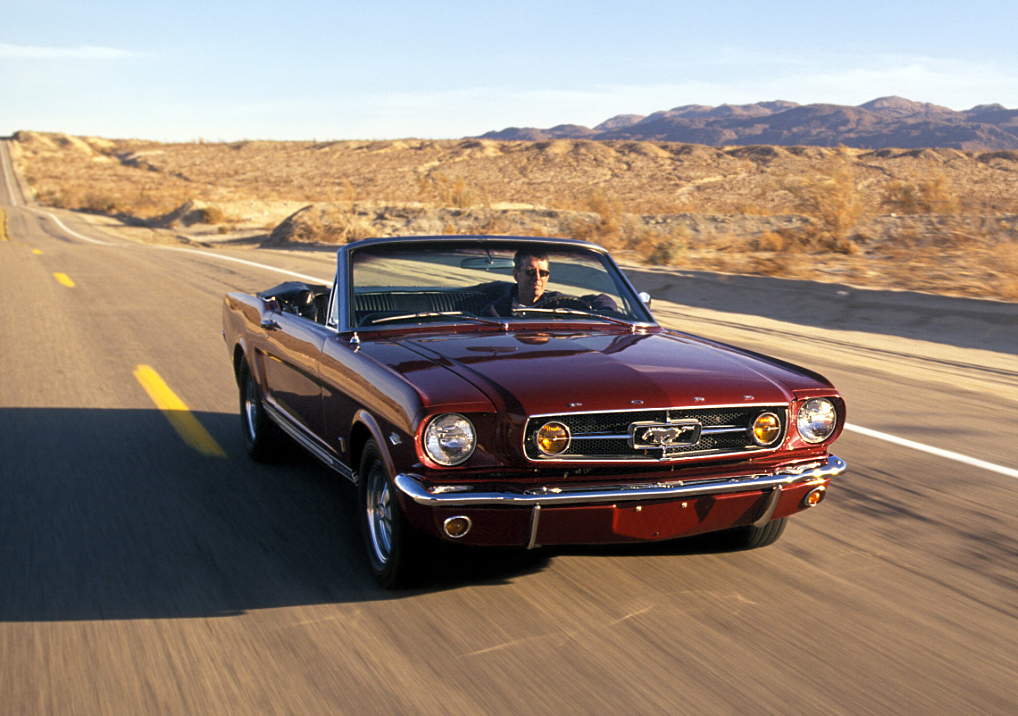
“Barreling over winding mountain roads was great fun with the car’s good road manners, precise steering, and instant throttle response.
“Few test cars have given us more sheer pleasure per mile than our bright Poppy Red Mustang. Just listening to that engine is enough to send an enthusiast into a glassy-eyed trance.”
Mustang in the UK
These days, of course, you can buy a right hand drive Mustang from your local Ford dealership, but back in the ‘60s they were a very rare sight on British roads.
You’re most likely to have seen one if you lived near one of the US airbases in the southern half of England.
Nevertheless, Autocar got hold of a 4-speed manual Hi-Po convertible for its October ‘64 issue to see how it would fare on our roads.
The “lusty” engine drew praise; less so the low gearing that made motorway driving at speed “painful to both the ear and the pocket, with petrol being swallowed at the rate of 12mpg and the engine thundering away under the bonnet”.
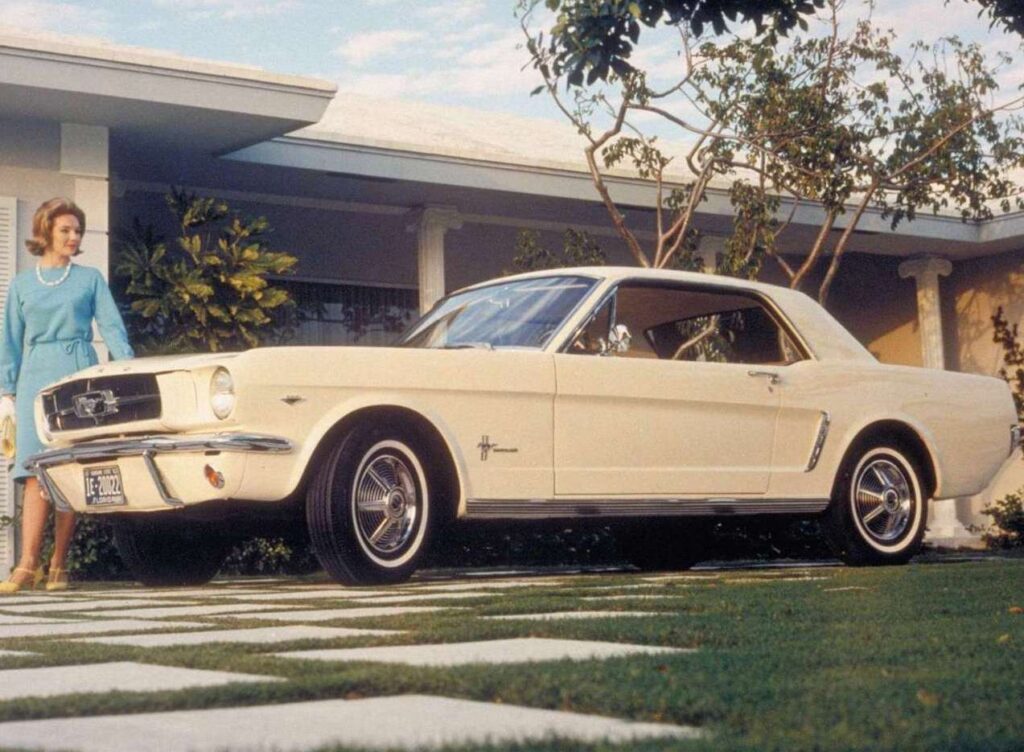
The test car was fitted with drum brakes, which were considered “almost worthless for hard work”, with brake fade a potentially dangerous issue.
Handling was surprisingly good for an American car, in the dry at least, with the handling package fitted to imported cars keeping “roll down to real sports car angles”.
In the wet, the Mustang’s back wheels “lose all sense of adhesion and spend a good deal of their time trying to get ahead of the front ones”.
Petrol was always cheaper in the US than here, and the car’s gas-guzzling nature (with a 140-mile range), combined with import taxes taking a US price of £875 to a UK price of £1275 would make the Mustang an “expensive animal to have in the stable”.
But “for those who want a car with outstanding performance, the Mustang is one which is certainly different”.
Carroll Shelby and the Mustang
By the end of 1965, Le Mans winning racer Carroll Shelby was transforming fastbacks into GT350s, the road-going version of the GT350R that carried all before it in Sports Car Club of America racing between that year and 1967.
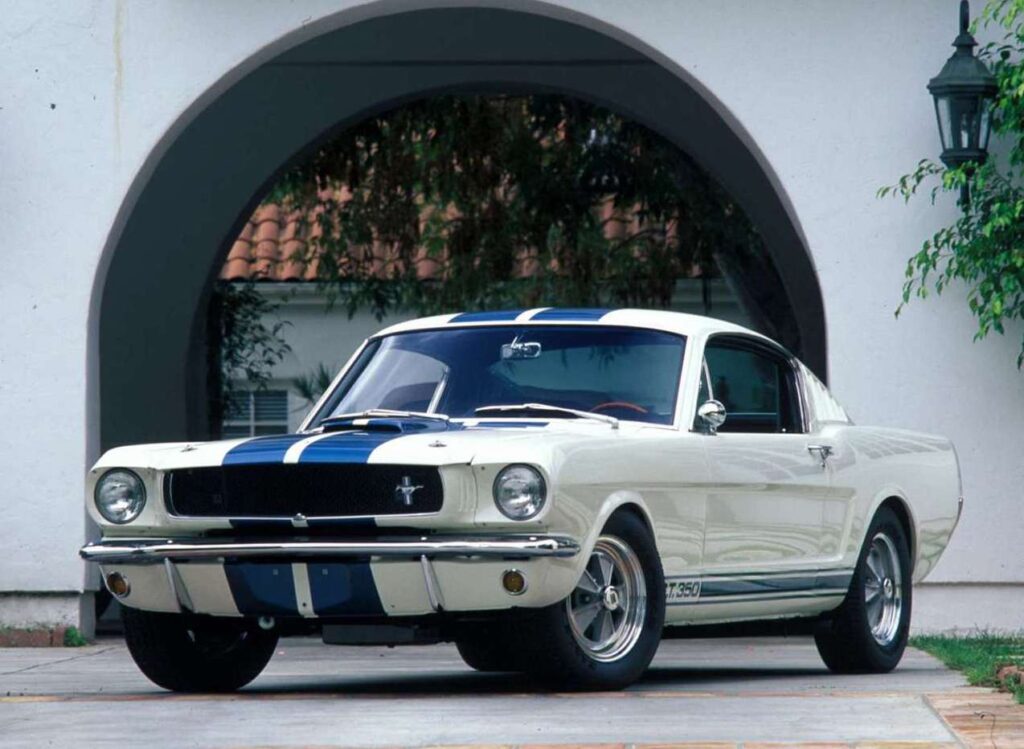
It featured the Windsor Hi-Po engine but with significant modifications, including a large 4-barrel Holley carburetor and hi-riser intake manifold, taking output to 306bhp.
The ‘65 cars were all painted Wimbledon White with Guardsman Blue rocker stripes on the bonnet – as per the Shelby Cobras – with a few wearing the Le Mans stripes over the whole body.
Adrian Flux American car insurance
Other colours were added for 1966, with the car marketed purely as the Shelby GT350. Buyers could opt for a 3-speed auto in place of the 4-speed manual, as well as a Paxton supercharger.
For 1967, the GT500 was added to the range, with a 7-litre V8 fitted with two Holley four-barrel carburetors sitting atop a mid-rise aluminum intake manifold.
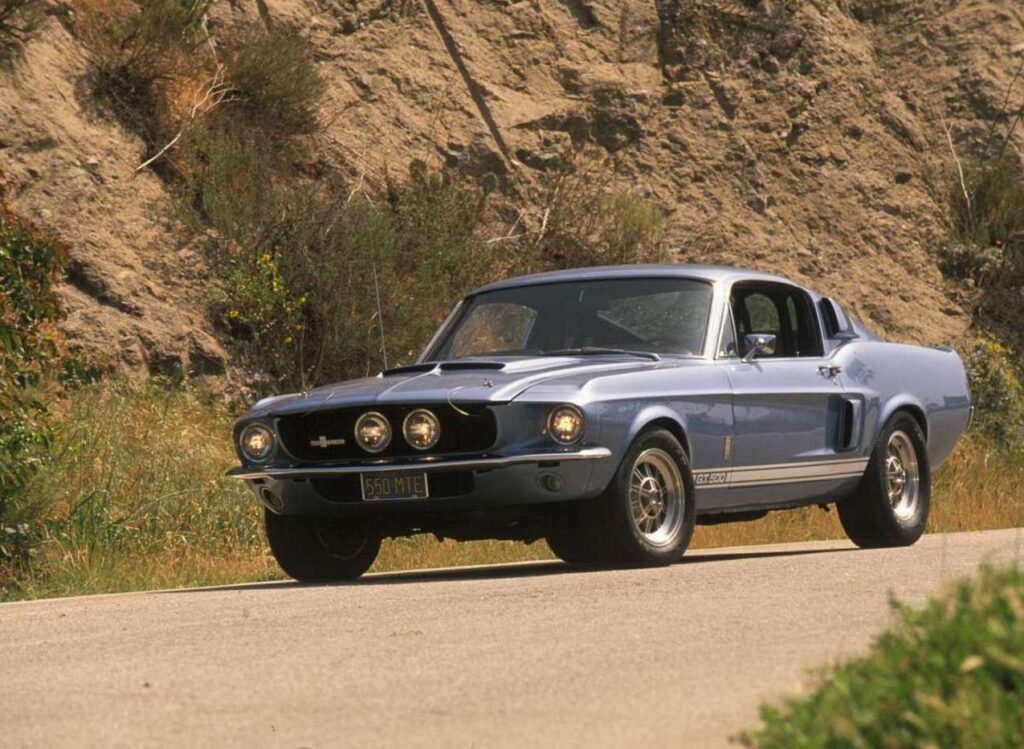
It was “the first car I’m really proud of”, according to Shelby, with just over 2,000 produced.
Shelby himself became less involved over the years, with the final cars produced in 1969, but his name is inextricably linked to the Mustang, with cars still bearing his name today.
The Mustang’s first redesign
It’s 1967, and things are going incredibly well for Ford, with Mustang sales still riding high, when Iacocca signed off on a redesign that saw the car grow – something he said later he regretted.
The increased size allowed for the deployment of a big-block V8 engine, while interior and boot space were both up.
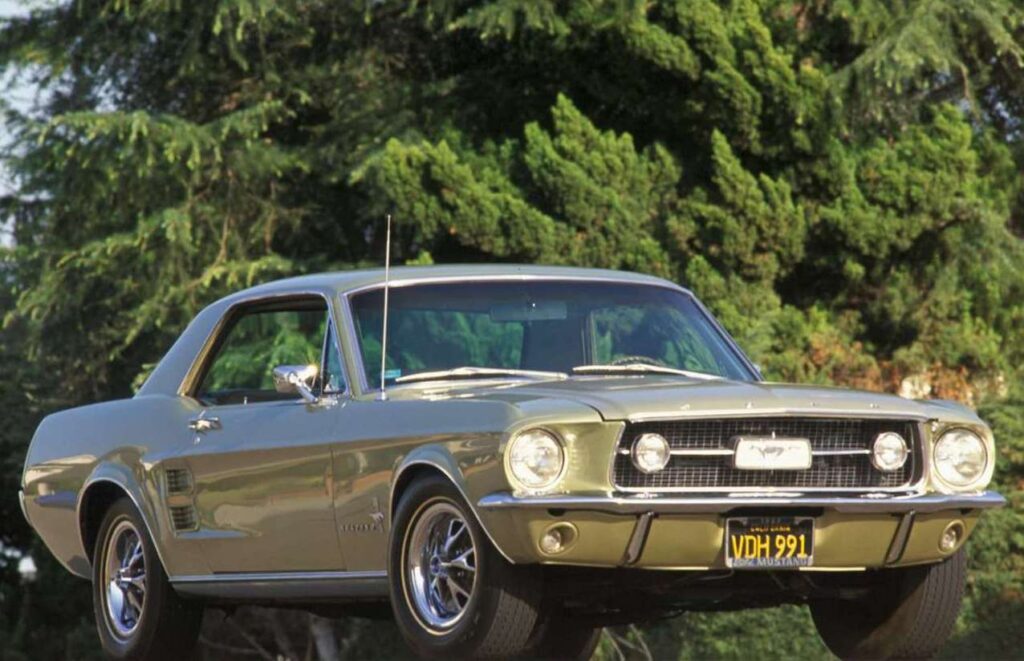
Cosmetic changes included concave rear lights, extra chrome, and wheel and fuel cap changes, while a new optional deluxe interior package smartened things up inside.
There was still a Hi-Po 289 on the list, but it now came behind the 335bhp, 390cu in (6.4-litre) FE engine from the Thunderbird.
In 1968, Steve McQueen drove a fastback GT in the film Bullitt, keeping the car very much in the public eye.
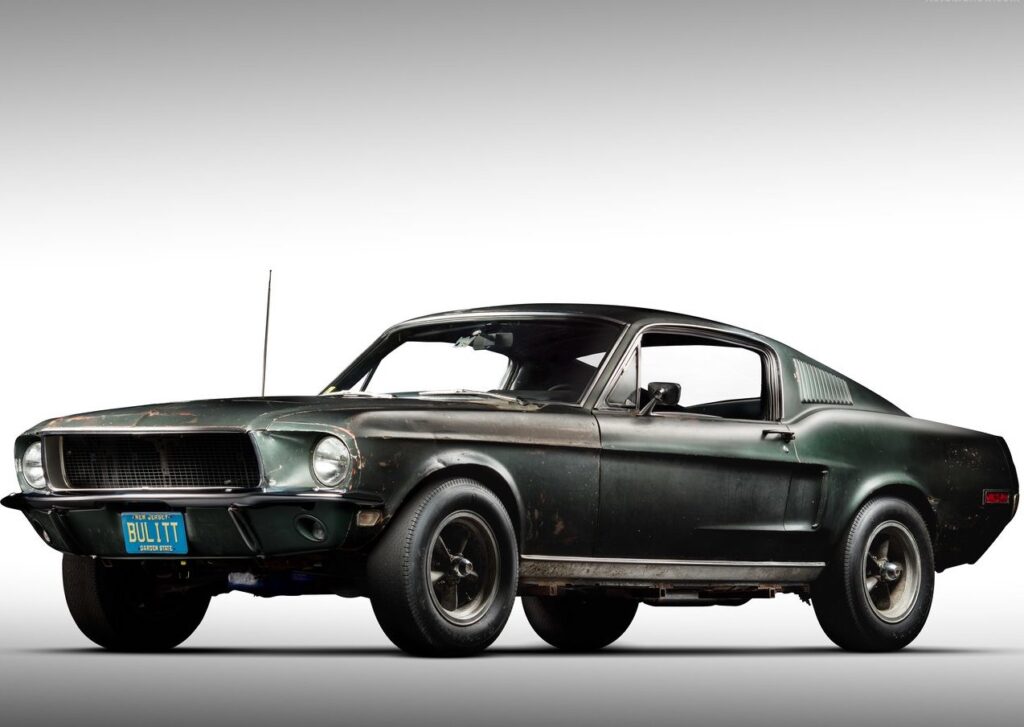
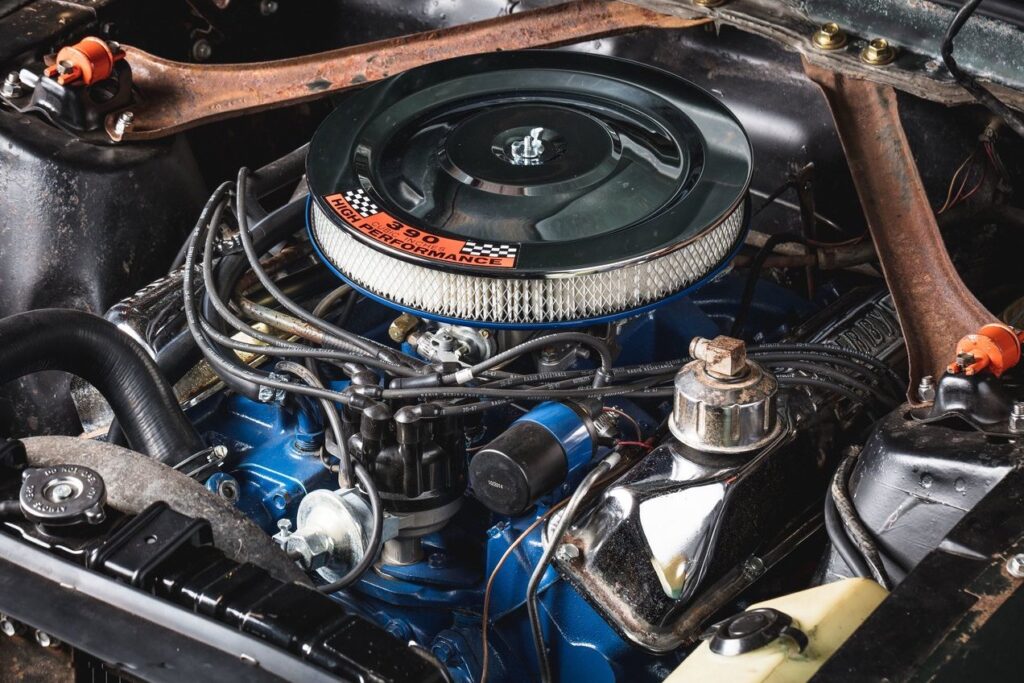
The following year, the Mustang got bigger and heavier again, the body lengthened by 3.8 inches and the width by about half an inch, while it gained a more aggressive-looking front end.
The bigger the car got, the fewer Ford sold, sales dropping from a peak of 607,568 in 1966 to 125,813 by 1972.
As early as 1968, at a Ford stockholder meeting Anna Muccioli, an artist who owned 200 Ford shares, addressed CEO Henry Ford II.
“I have just one complaint,” she said. “Thunderbird came out years ago. It was a beautiful sports car. And then you blew it up to the point where it lost its identity. And now the same thing is happening to the Mustang. I have a ’65 Mustang, and I don’t like what’s happening. They’re blowing that one up. Why can’t you just leave a sports car small?”
Mustang performance specials
In the late ‘60s, Ford released a range of performance models to add to the Shelby 350GT and 500GT, including the Mach 1 – the success of which ultimately led to the removal of the GT model from the range.
Only available as a fastback, the Mach 1 featured a matt black bonnet stripe with bonnet pins, a bonnet scoop, competition-standard suspension, chrome exhaust tips and optional front and rear spoilers and rear window slats.
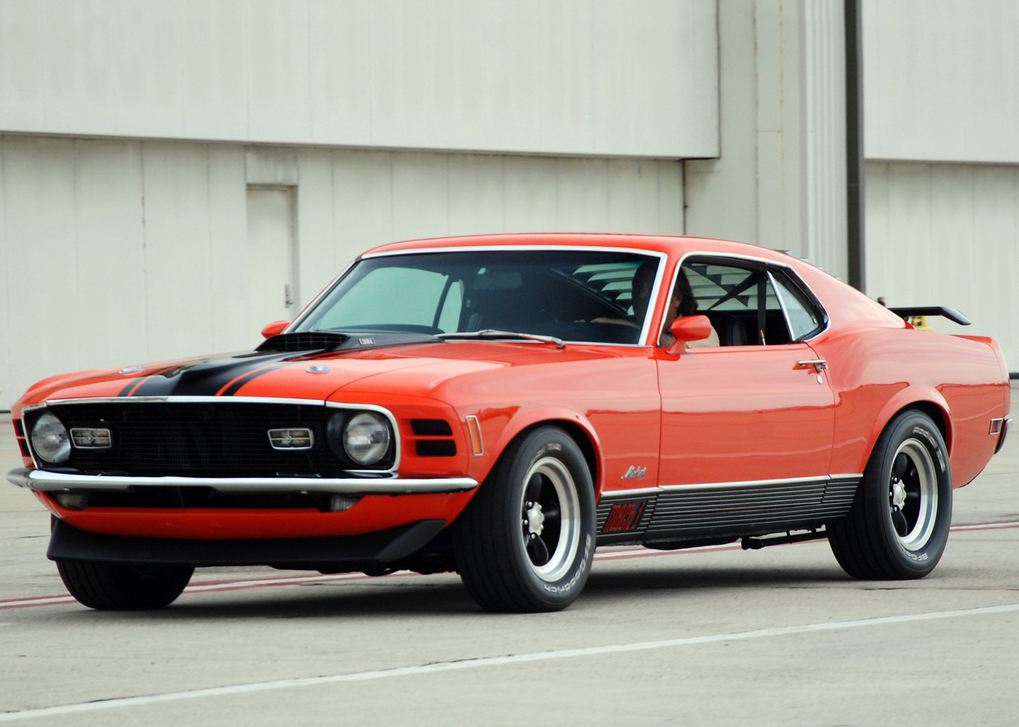
Engines ranged from the 351 Windsor V8 up to the 428 Super Cobra Jet, rated at 335bhp and the same unit that pushed NHRA super stock Mustangs through the quarter mile in the mid-11s with speeds in the 120mph range.
Mach 1s also set 295 speed and endurance records in the hands of racers Mickey Thompson and Danny Ongais at Bonneville salt flats over a series of 500-mile and 24-hour courses.
But Car & Driver was less than impressed by the ever-growing Mustang, even in Mach 1 form, described as “the toughest Mustang yet”.
“Since the basic Mustang shape has been a howling success in the market, you can’t blame Ford for sticking with a winner,” it wrote. “But you can blame it for excess.”
The extra 3.8 inches in length was all ahead of the front wheels, which the magazine said was “the last thing the Mustang needed”.
“The test car with its 428 Cobra Jet engine has 2140 of its 3607lbs balanced on the front wheels, and that’s with a full gas tank. Fifty nine point three per cent of its weight on the front wheels. Double grim.
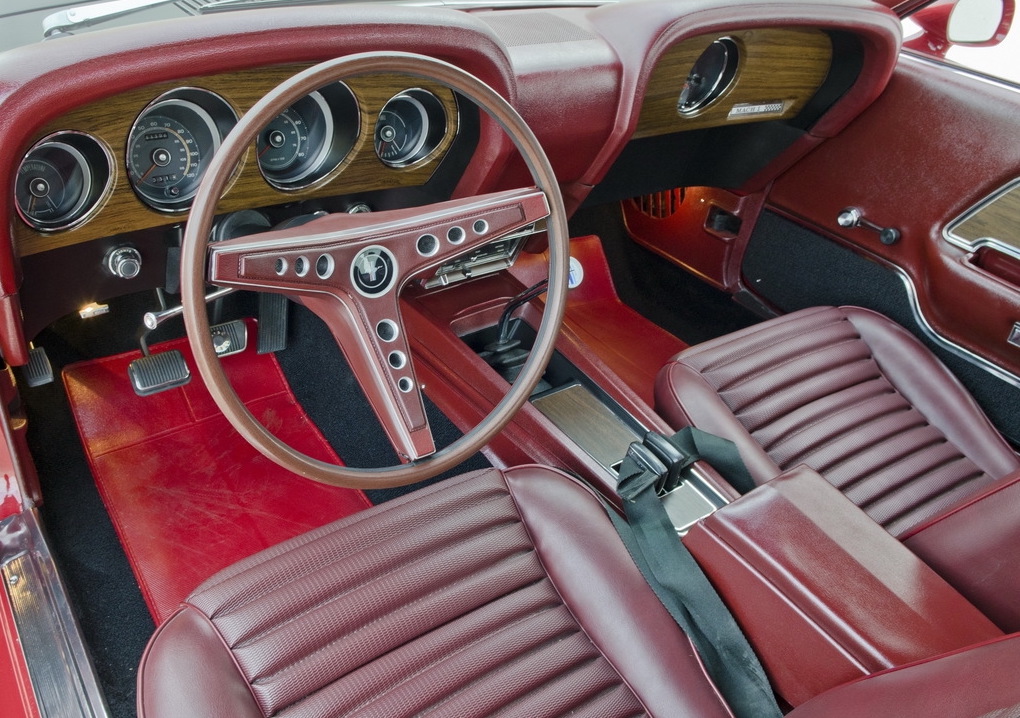
“Any rear-wheel-drive car would be hamstrung with that kind of weight distribution and the Mustang is no exception. It can’t begin to put its power to the ground for acceleration. And, when it comes to handling, the most charitable thing to say is that the Mustang is all thumbs. Well, fetlocks anyway. We expect a lot from a package as bold as the Mach I – but it doesn’t come through.”
The Mach 1 sold well though, and survived into the facelifted car from 1971 until it was discontinued in 1973.
Boss time
Alongside the Mach 1 came the Boss Mustangs, the 302 and 429, both available from 1969 to 1970.
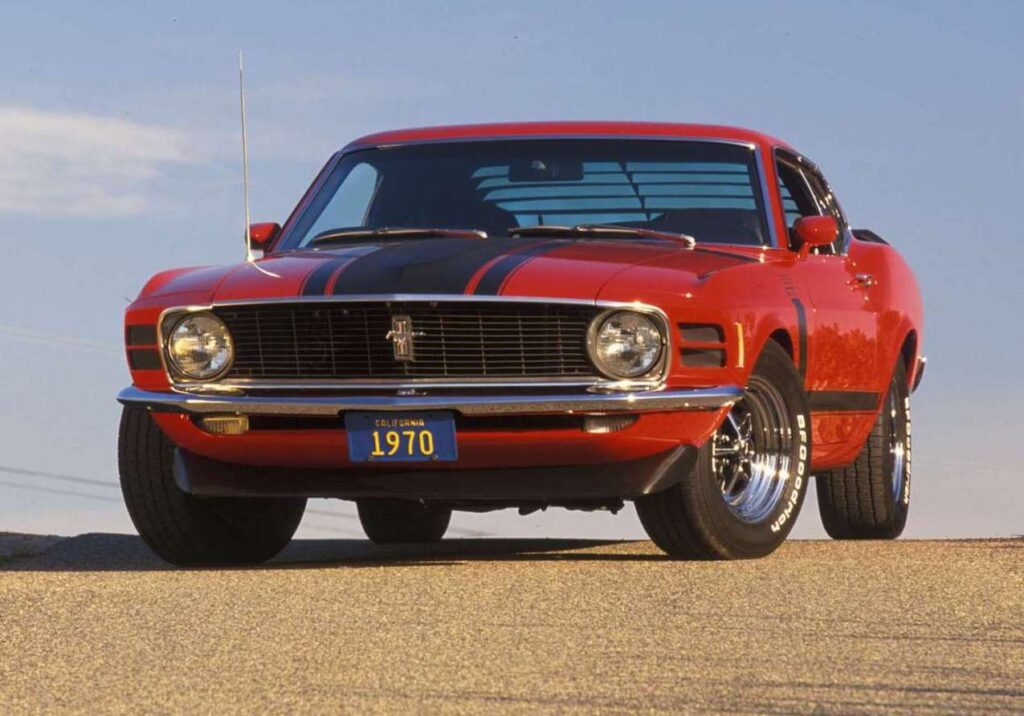
Released in response to competition from the Chevrolet Camaro, the cars both grew out of motor racing – the 302’s Hi-Po, small block engine created in 1968 for the following year’s Trans-Am road racing series; and 429 to fulfil Ford’s requirement to homologate its semi-hemispherical engine for NASCAR racing.
The 302 produced 290bhp and featured a lower ride height than standard Mustangs, plus front disc brakes, competition suspension, and a four-speed manual box.
Tyre trouble and slow pit stops prevented the 302 from taking the Trans-Am title in 1969, losing out to the slicker Camaro team led by Roger Penske, but Mustangs did win the championship the following year.
As for the Boss 429, NASCAR homologation rules meant that 500 road cars had to be fitted with the semi-HEMI engine and sold to the public.
Like our illustration of the Ford Mustang: the right car at the right time at the beginning of the article?
Download a free high-quality poster version here.
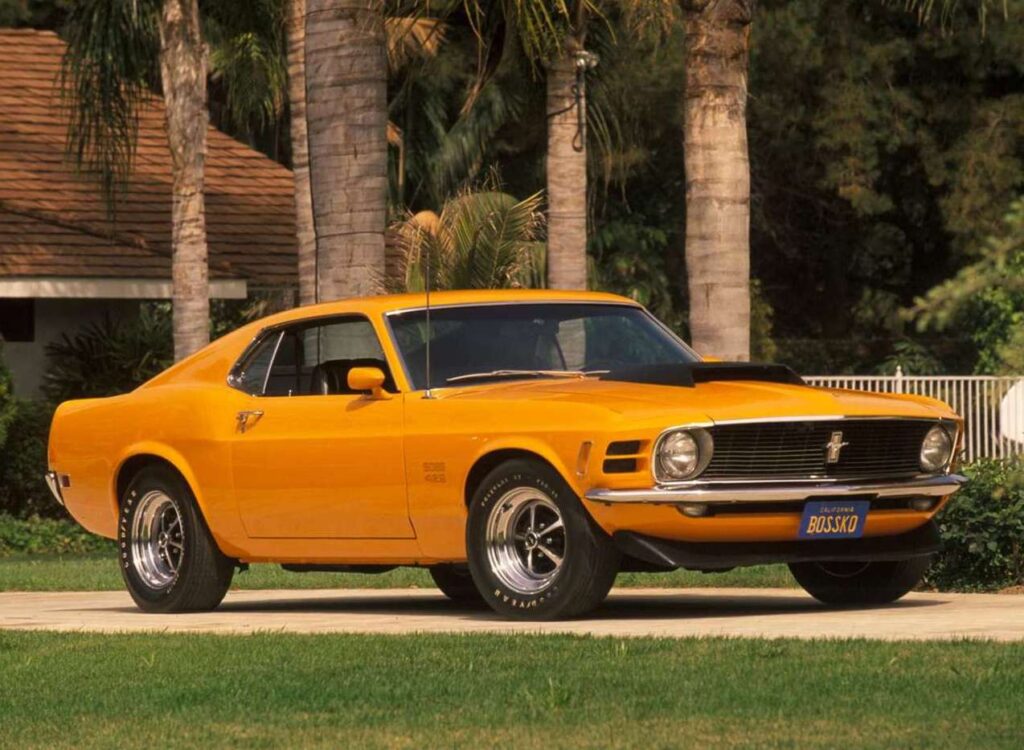
The engine bay was not wide enough for the massive engine, so Kar Kraft of Dearborn – which worked on Ford’s ‘special vehicles’ – was brought in to modify the 4-speed Cobra Jet engined Mustangs.
As described by Car & Driver, the Mustang had already become nose-heavy, and this was even more pronounced with the Boss 429, so the battery was moved to the boot and a sway bar was fitted to reduce rear body roll – essential for a successful track car.
The car was officially rated at 375bhp and, though it was rumoured that Ford underestimated its true power to keep insurance premiums down, period tests backed up the company’s figure.
It also generated a whopping 450lb ft of torque, and could hit 60mpg in 5.3 seconds, pretty impressive for the late 60s.
All told, 1,359 Boss 429s were made in 1969 and 1970 and, with many lost to accidents over the years, these days it’s one of the rarest and most highly valued muscle cars ever built.
The last of the original pony cars
The Mustang went through another facelift in 1971, again growing in size. Thanks to tightening emissions regulations the Boss and 429 big block variants were dropped, leaving the 351cu in models as the largest engines available.
If the early years of the Mustang had been a time of wild automotive excitement, the combination of rising insurance premiums, the energy crisis and safety and emissions standards had somewhat neutered it.
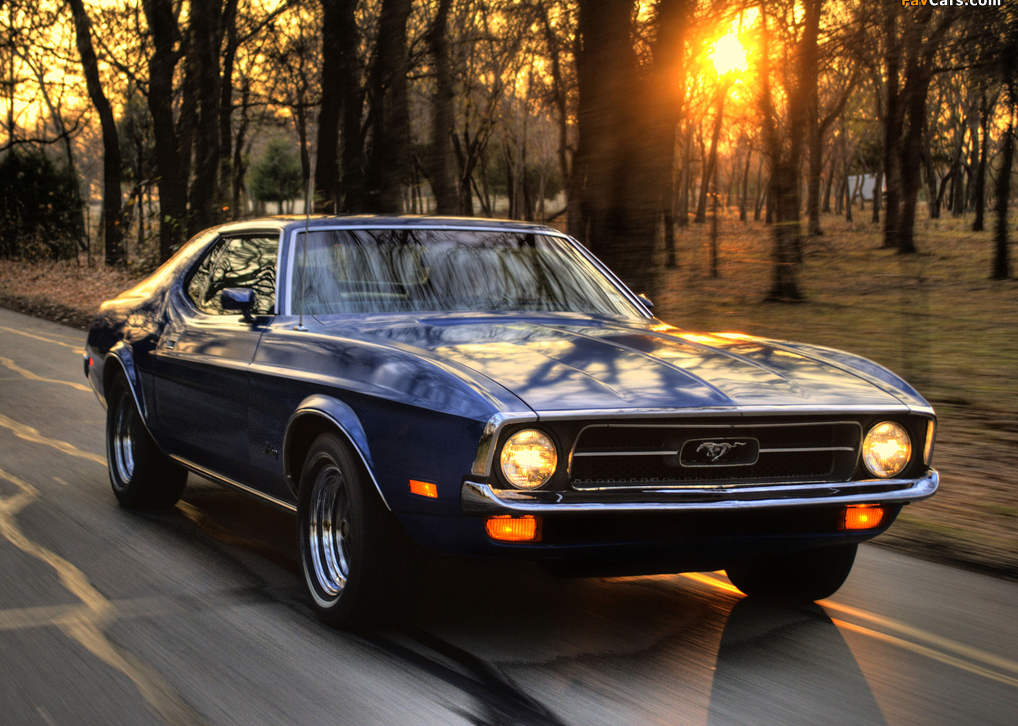
And with so much competition from rival manufacturers, customers were no longer queuing overnight outside showrooms to nab the original pony car.
Car & Driver placed the blame firmly at Ford’s door.
“Had Ford remained true to the original Mustang concept, a reasonably-priced, reasonably-sized 2+2 vehicle that could be interpreted, on an international scale, as a very much Americanized GT car, the Mustang might still be alive and healthy,” it wrote.
“Instead, in its most recent editions, the Mustang had become little more than an intermediate sedan styled in the most impractical – close to outrageously unusable – manner.”
The last of the mk1s rolled off the production line in 1973, barely recognisable as the car that had lit a fire under America’s youth in 1964.
Mustang II: back to basics
Iacocca had already decided to produce a new, smaller Mustang for 1974 long before the fuel crisis hit, but when the new car launched its timing couldn’t have been much better.
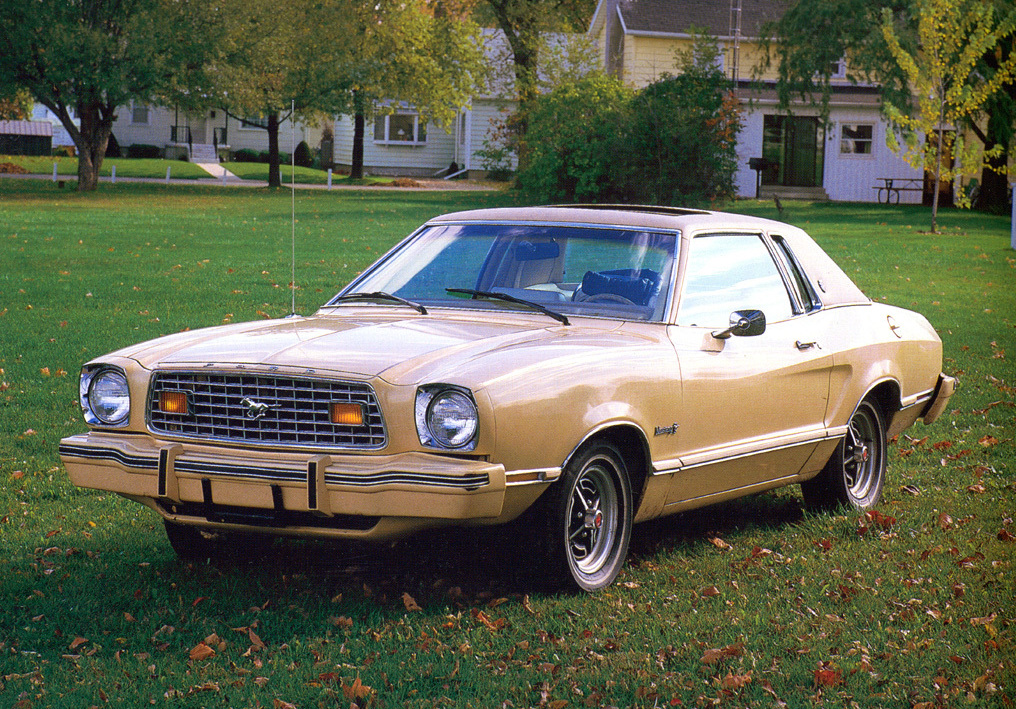
Customers were increasingly buying cheaper, more fuel efficient motors, and the Mustang II would be based on the subcompact Ford Pinto – an even smaller platform than that of the mk1.
It was more than a foot shorter, four inches narrower, and 900lbs lighter than the outgoing model.
The aim was still to woo the youth market, but it would no longer compete with the Camaro and Pontiac Firebird, but with sporty subcompacts – including European imports like the Toyota Celica, Datsun 240Z and Ford’s own Capri.
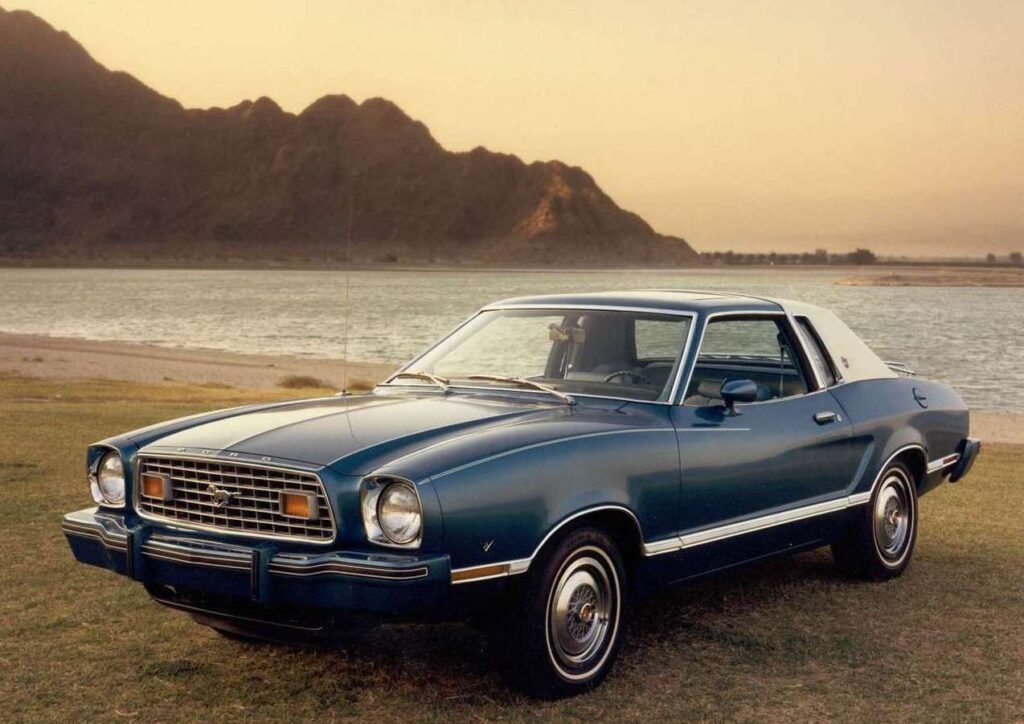
This more dainty pony car had a more dainty base engine, a 2.3-litre OHC four, the only other option at launch a 2.8-litre V6. With only 88 and 105bhp respectively, it was a far cry from the Mustang’s heyday…
Despite this lack of performance, the new Mustang was an immediate sales success, with 385,993 sold in 1974’s launch year, about 250,000 up on 1973 and the best year since 1967.
It was also named Motor Trend’s car of the year, writing that it was “the right size at the right time for the greatest number of motorists. Not small enough to be cramping, and not big enough to be excessive.”
By 1975, however, memory of the oil crisis was receding, and Ford shoehorned a 4.9-litre V8 into the cramped engine bay to bring performance up to acceptable levels.
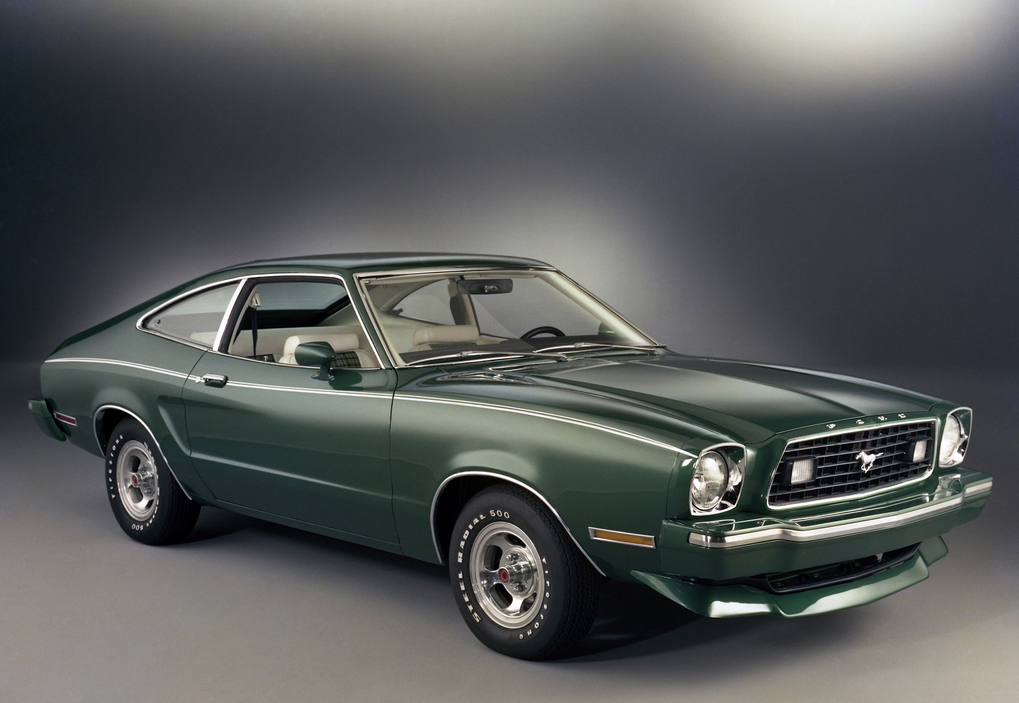
The car was available in right hand drive form, and Autocar tested a Mustang Ghia, which reached 60mph in a less than earth-shattering 10 seconds.
“If it weren’t for the American emissions regulations, which strangle the V8, covering it in electronic and mechanical pumps and sensors to the extent that it is difficult to sort out what lead goes where, the car’s performance would match its looks,” the magazine wrote.
“As it is, it represents an admittedly small but nonetheless welcome step back to the image of the American muscle car.”
The end of the fuel crisis, however, saw Americans flock back to bigger cars: the Mustang II was of its time, but that time had passed.
A number of special trim editions between 1976 and 1979, including the Stallion, the Cobra II, and the King Cobra, kept sales steady but, with a new Mustang in the pipeline, the II quickly fell out of favour. More than 1.1million Mustang IIs were built over five years.
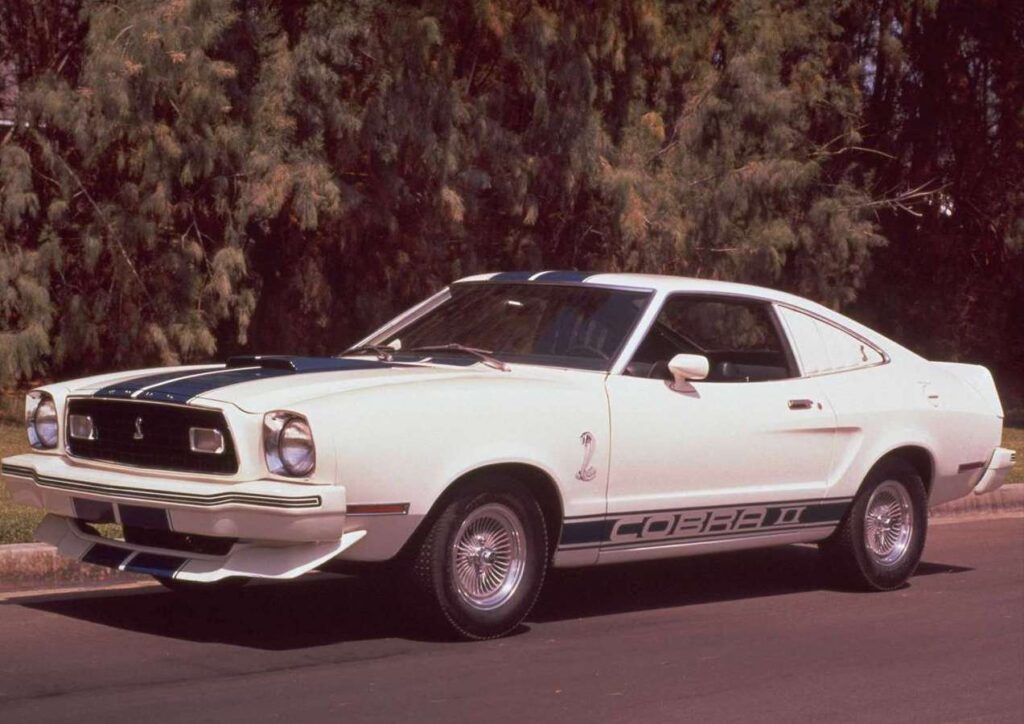
The Ford Mustang has been in continuous production since 1964, changing over the years to meet demand, with plenty of ups and downs along the way.
Donald Frey, who helped bring the car to production, perhaps summed it up best when he said: “Mustang has come to mean more than either a horse or automobile. Mustang means fun and youth and glamour. Mustang means sunglasses and shoes and hats.”






